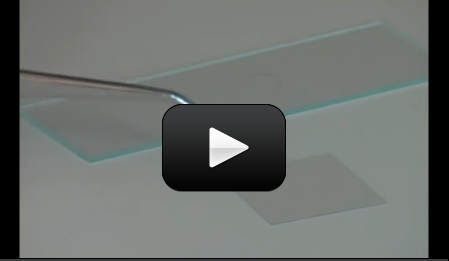Make sure you’ve completed the How to Use a Microscope activity before you start here!
This is simplest form of slide preparation! All you need to do is place it on the slide, use a coverslip (and you don’t even have to do that if it’s too bumpy), and take a look through the eyepiece. No water, stains, or glue required.
You know that this is the mount type you need when your specimen doesn’t require water to live. Good examples of things you can try are cloth fibers (the image here is of cotton thread at 40X magnification), wool, human hair, salt, and sugar. It’s especially fun to mix up salt and sugar first, and then look at it under the scope to see if you can tell the difference.
Please login or register to read the rest of this content.


We won’t be able to recommend a specific store in your area. Telescope or camera stores often sell microscopes. This page has recommendations on how to shop for microscopes and even shows you how you can make a basic microscope: https://www.sciencelearningspace2.com/2010/07/microscope-shop-list/
i dont have a microscope were can i find one in alberta
haha about the eylashes I used to get confused because our teacher had microscopes that had little black pointers so that you could place your thing by it and then show it to someone and they know what your looking at… I thought it had like a million and one of the pointers so I would always put it in the wrong place… until I realized it was my eyelashes!
THESE THINGS WERE SOOOOOOOOOOO COOL!!! The blood that I looked at on a pre-done slide looked like a rock slide on a snowy mountain! (Because of the white light of the microscope.) The mouth smear that was pre-done looked like cheetah spots IN PINK with little black dots at the end of all of them! IT WAS AWESOME!!
Ok… thanks so much! 🙂
It’s actually a skill to learn how to look through a microscope so that it’s clear. I would recommend practicing by covering up one eye (not the one you’re looking through the scope with), and also trying looking in a dark room (if you have an electric light on your scope). That should help when you are first learning how to look.
When I’m looking through my lens, sometimes I can see thick strands of something randomly. It took me a while, but I realized it was my eyelashes… 😉
Any tips?
Thanks in advance